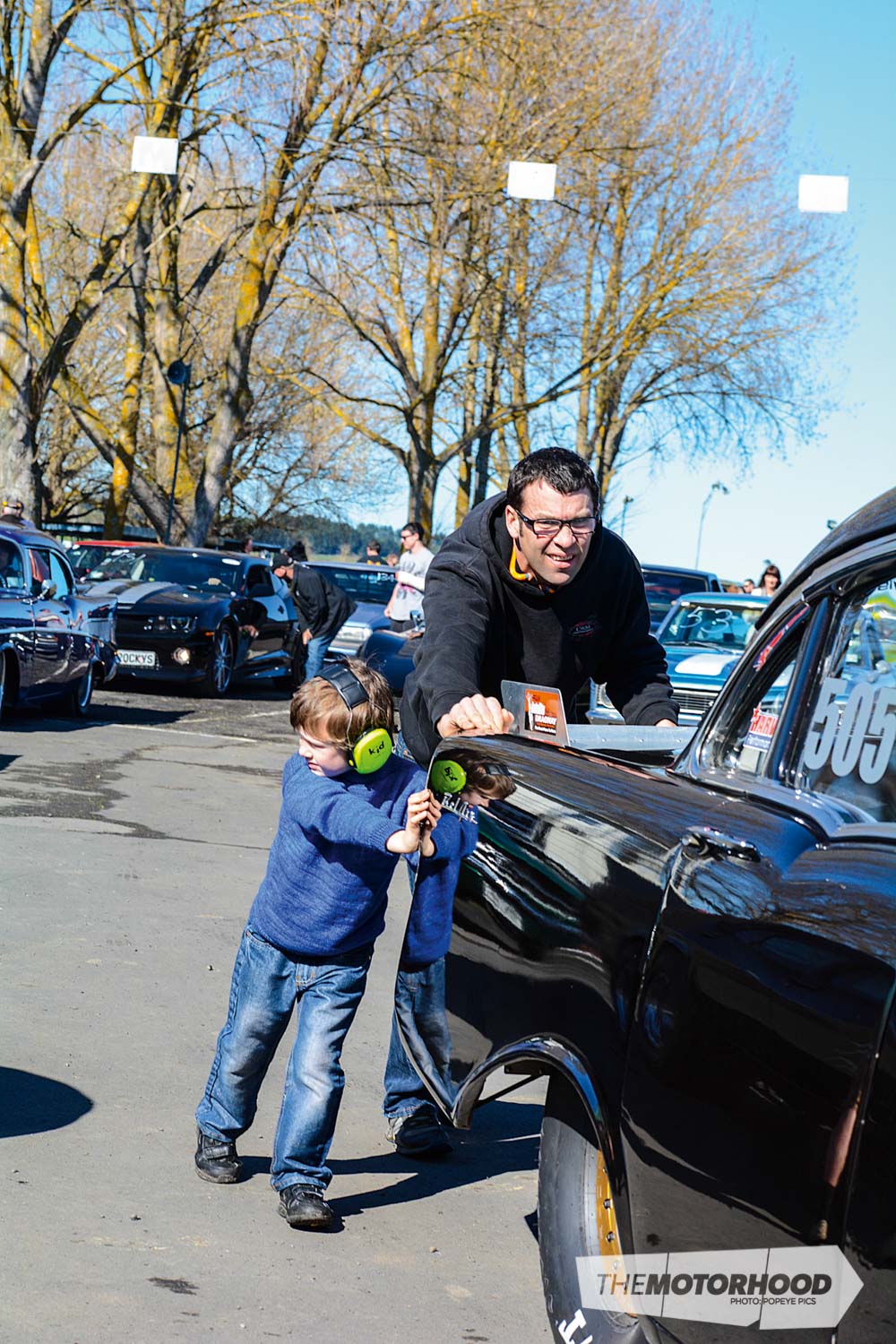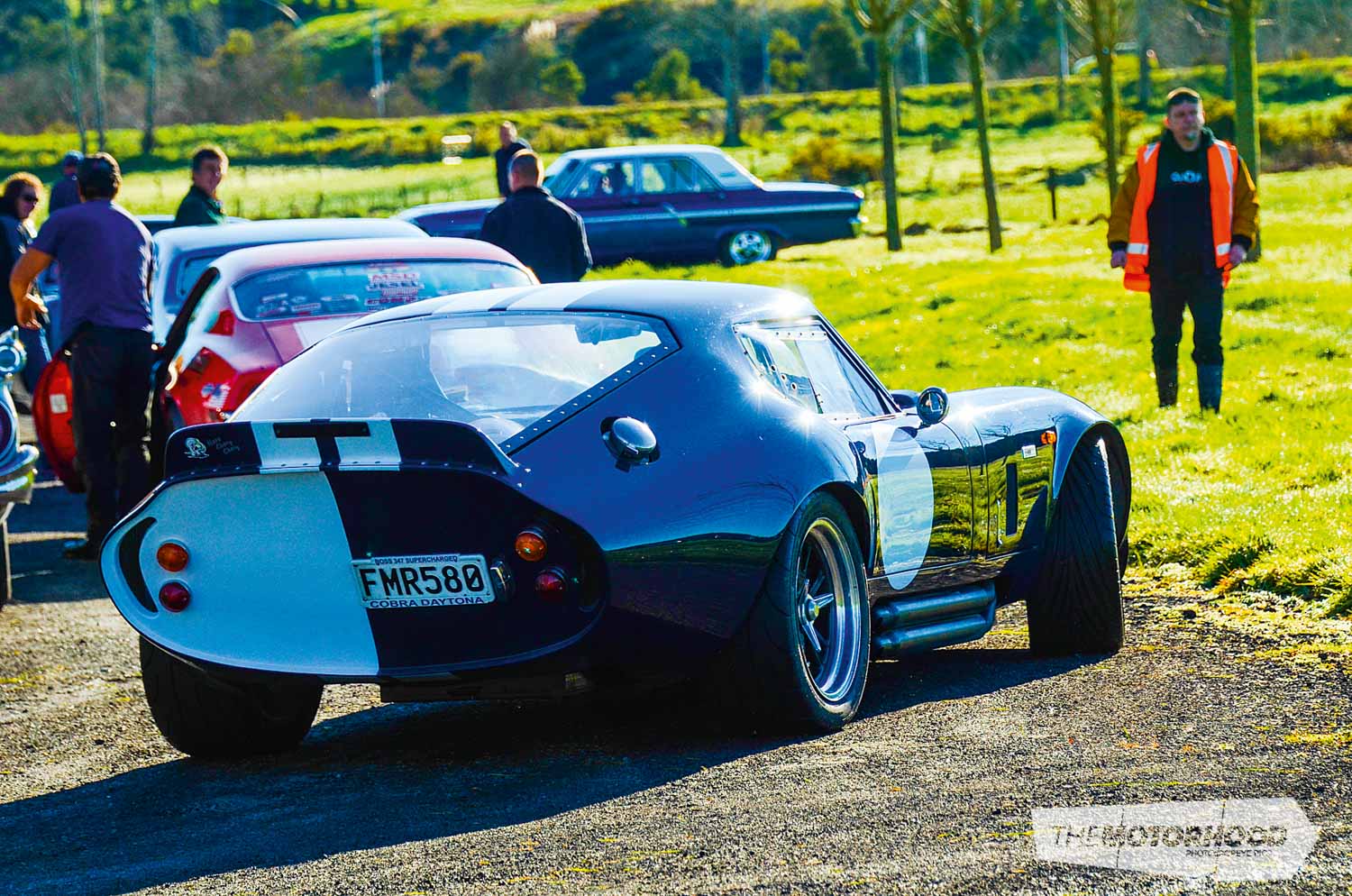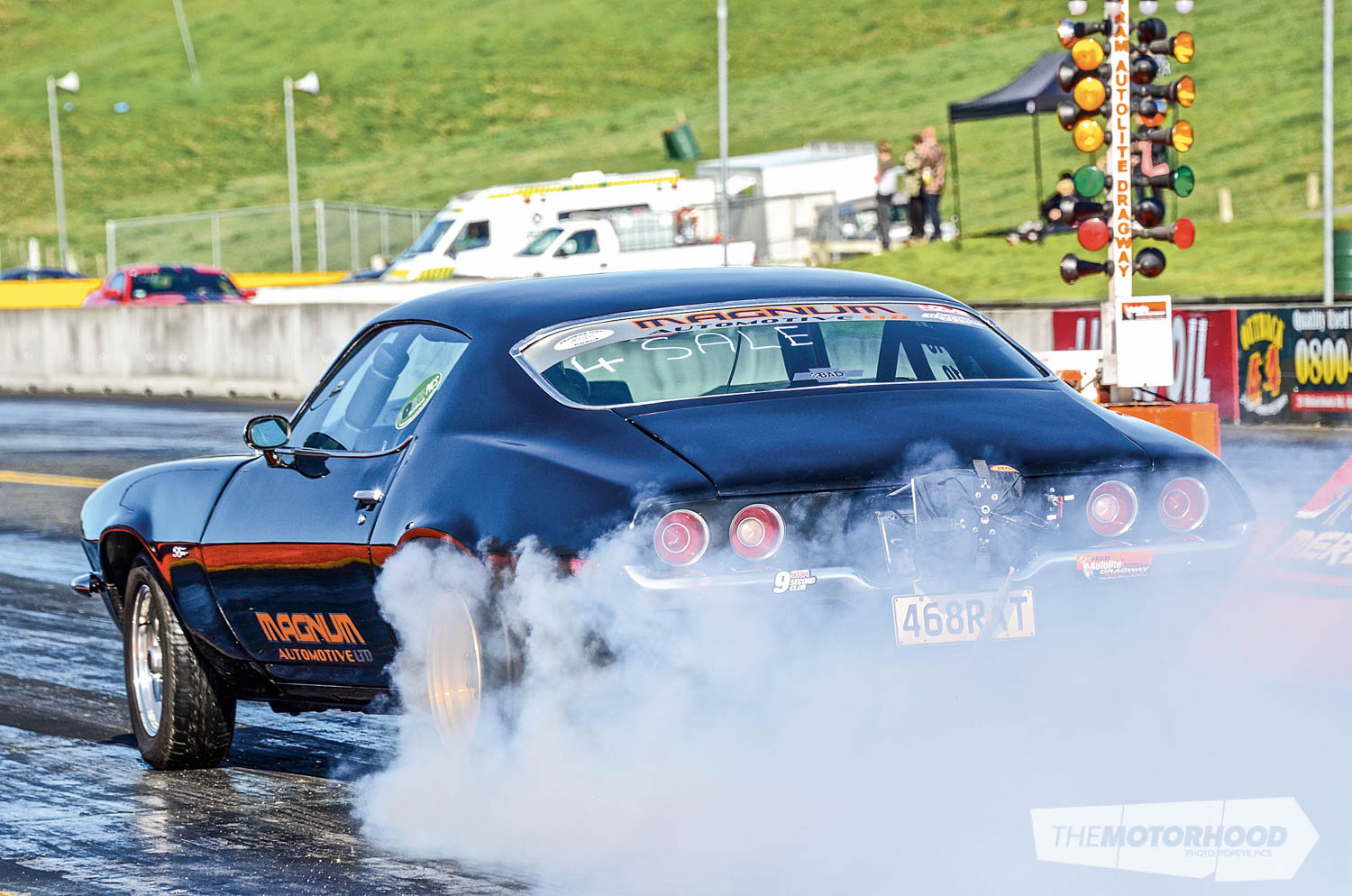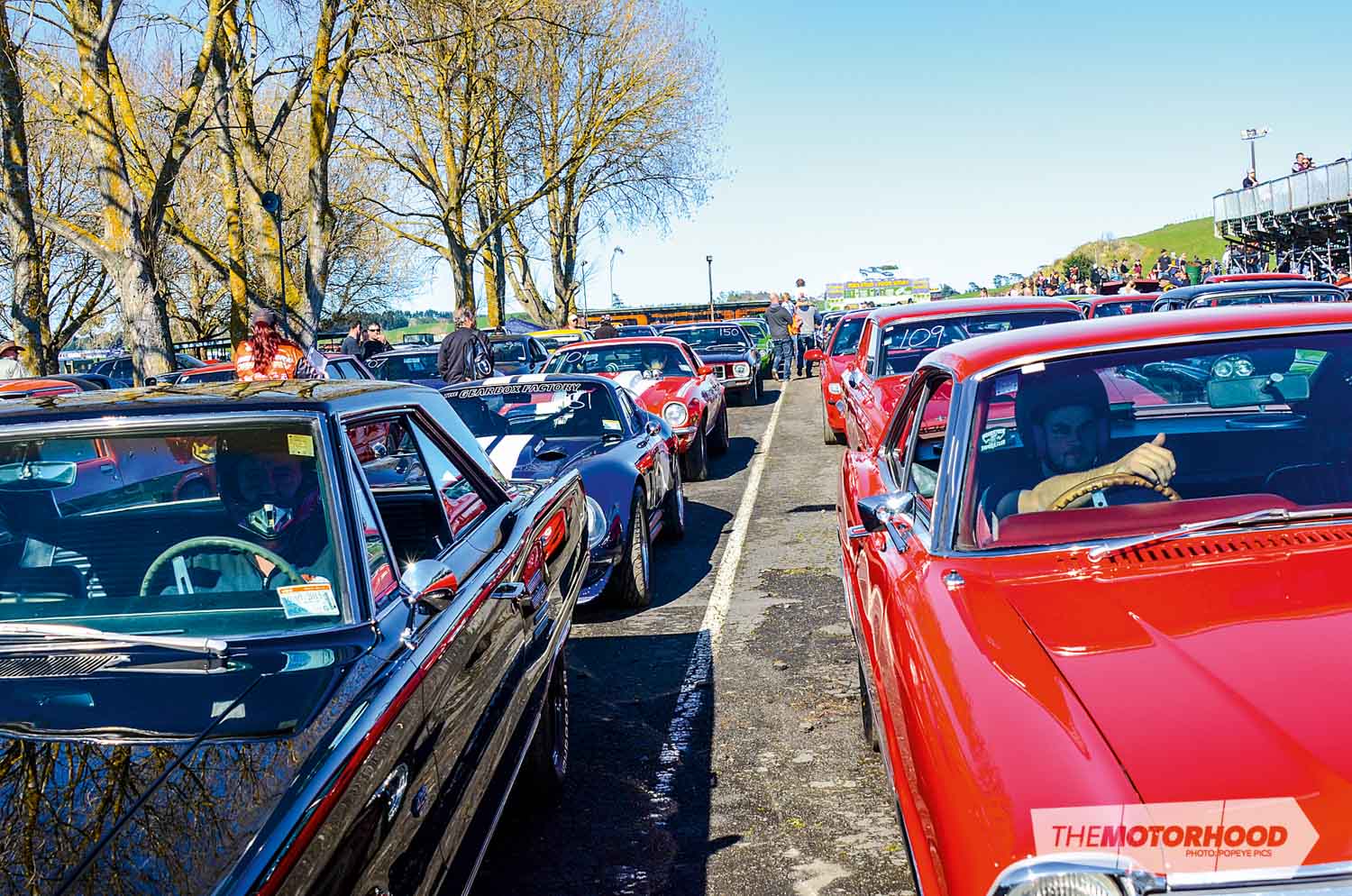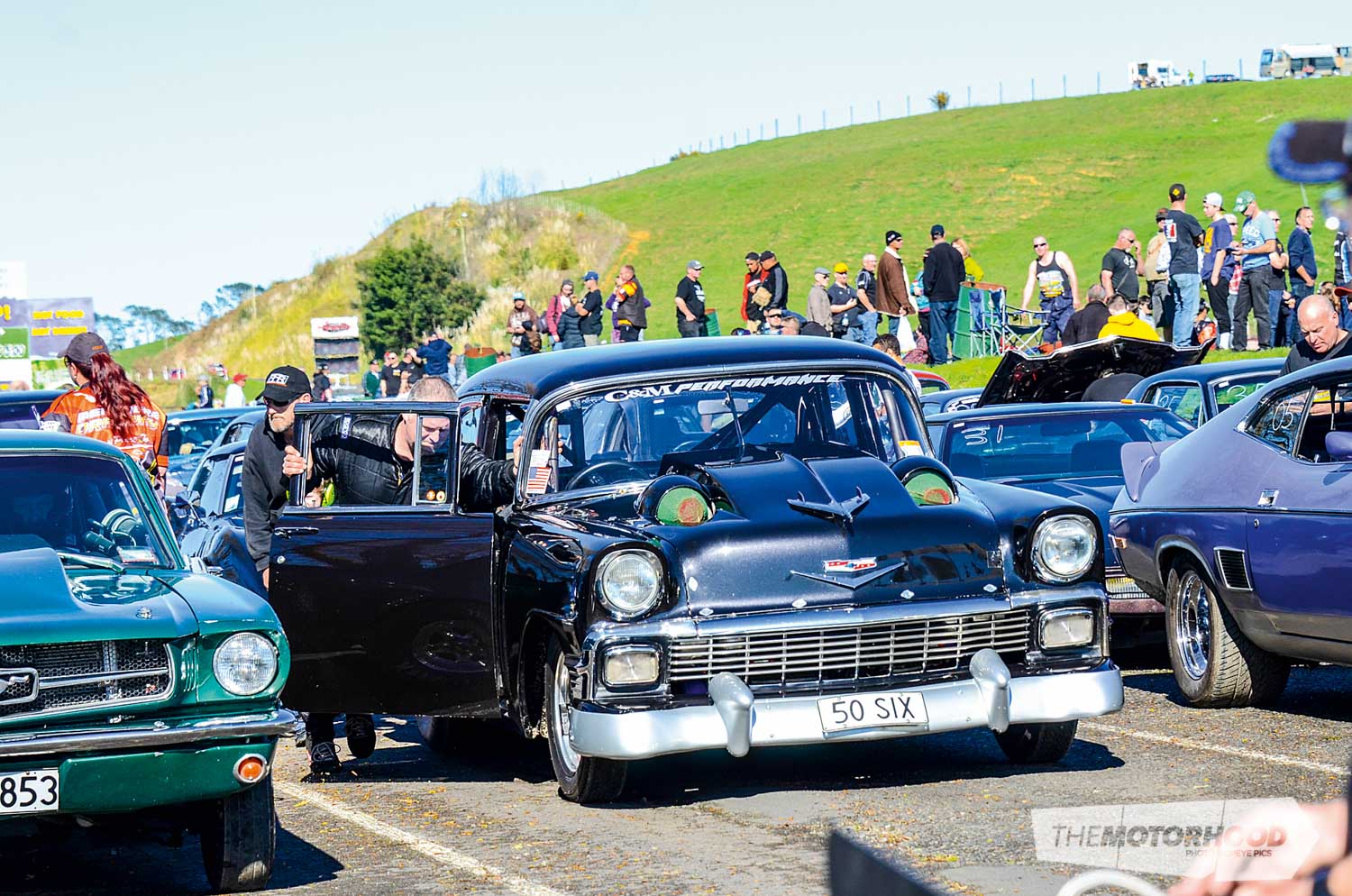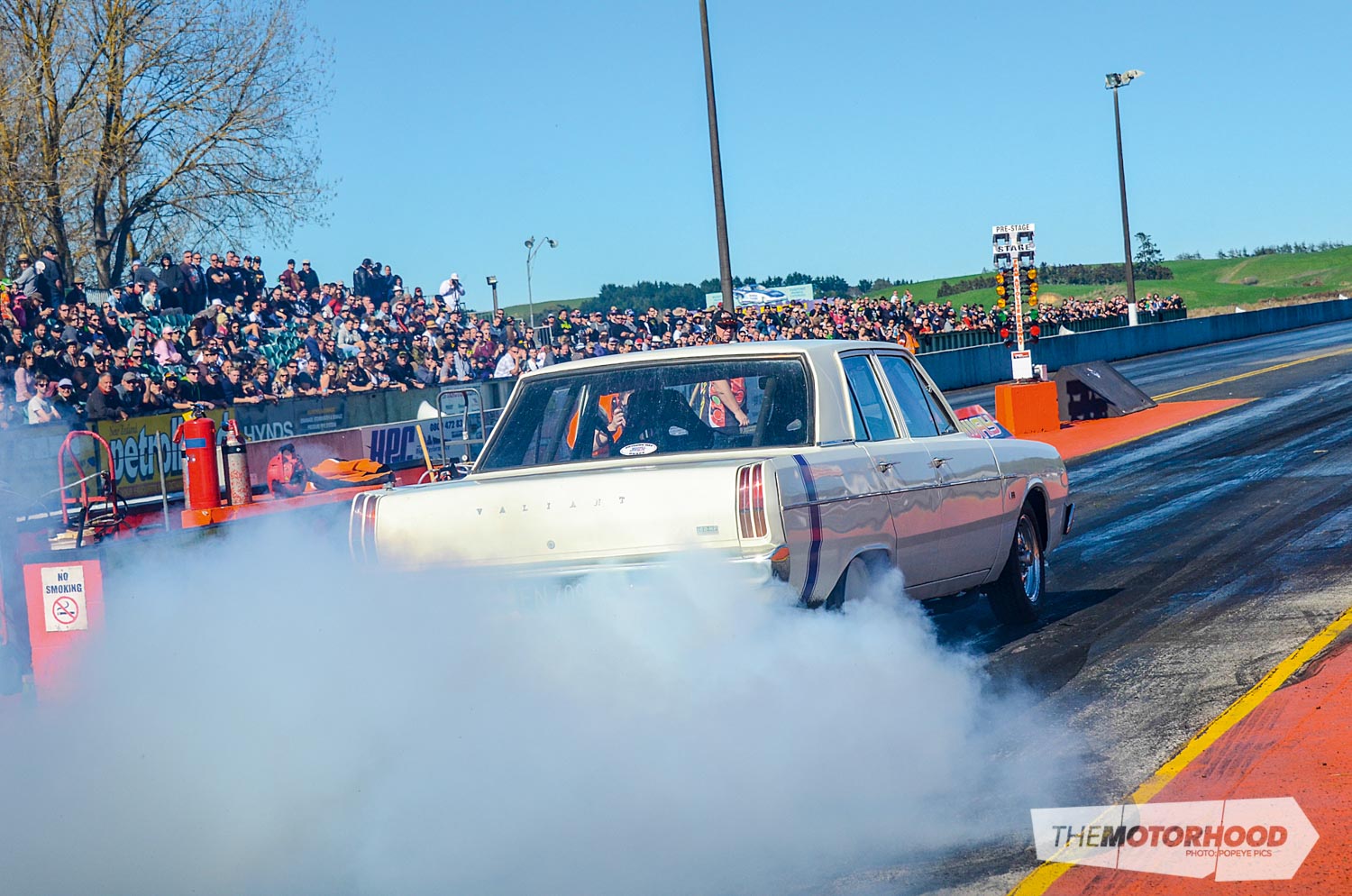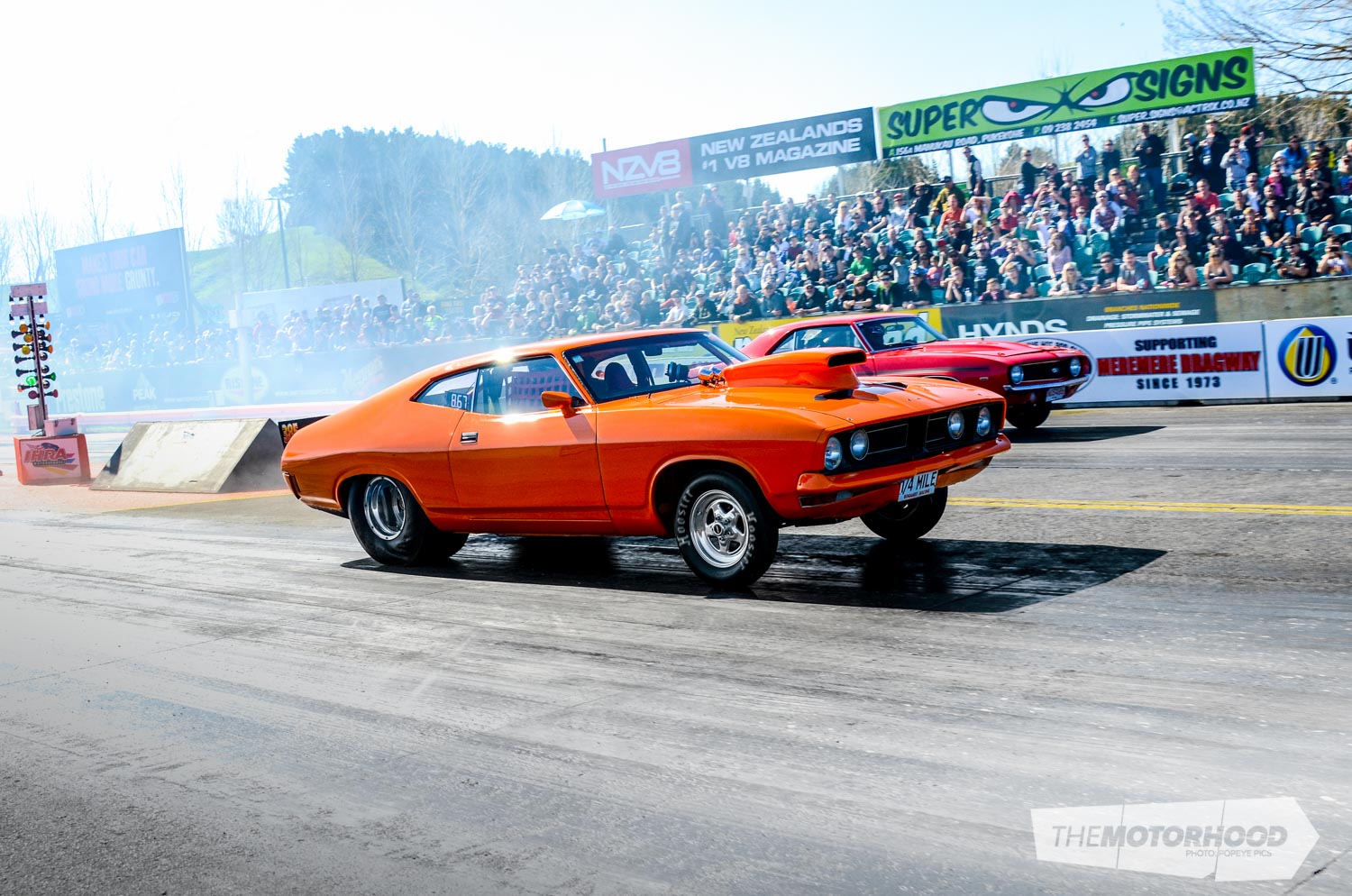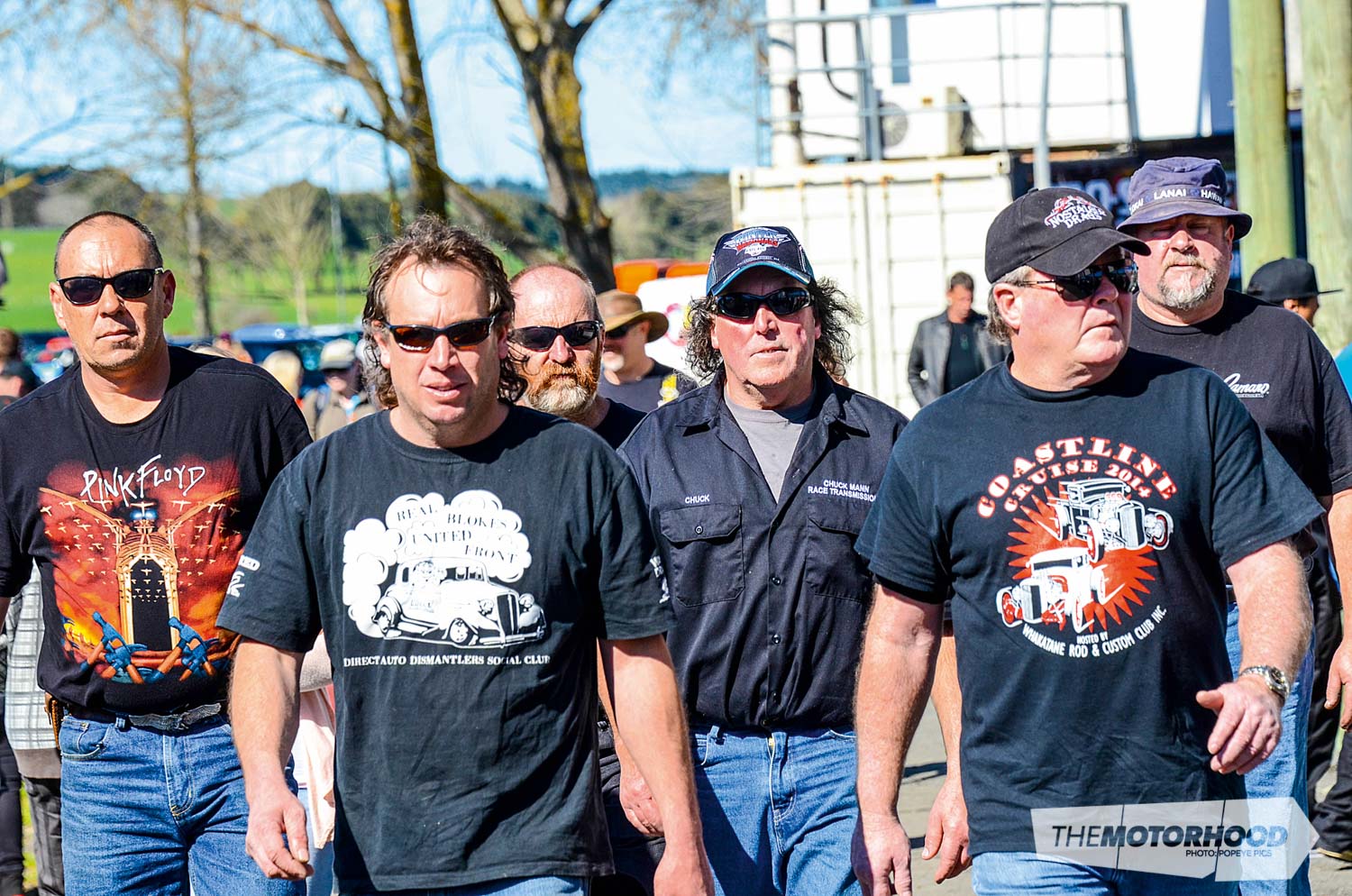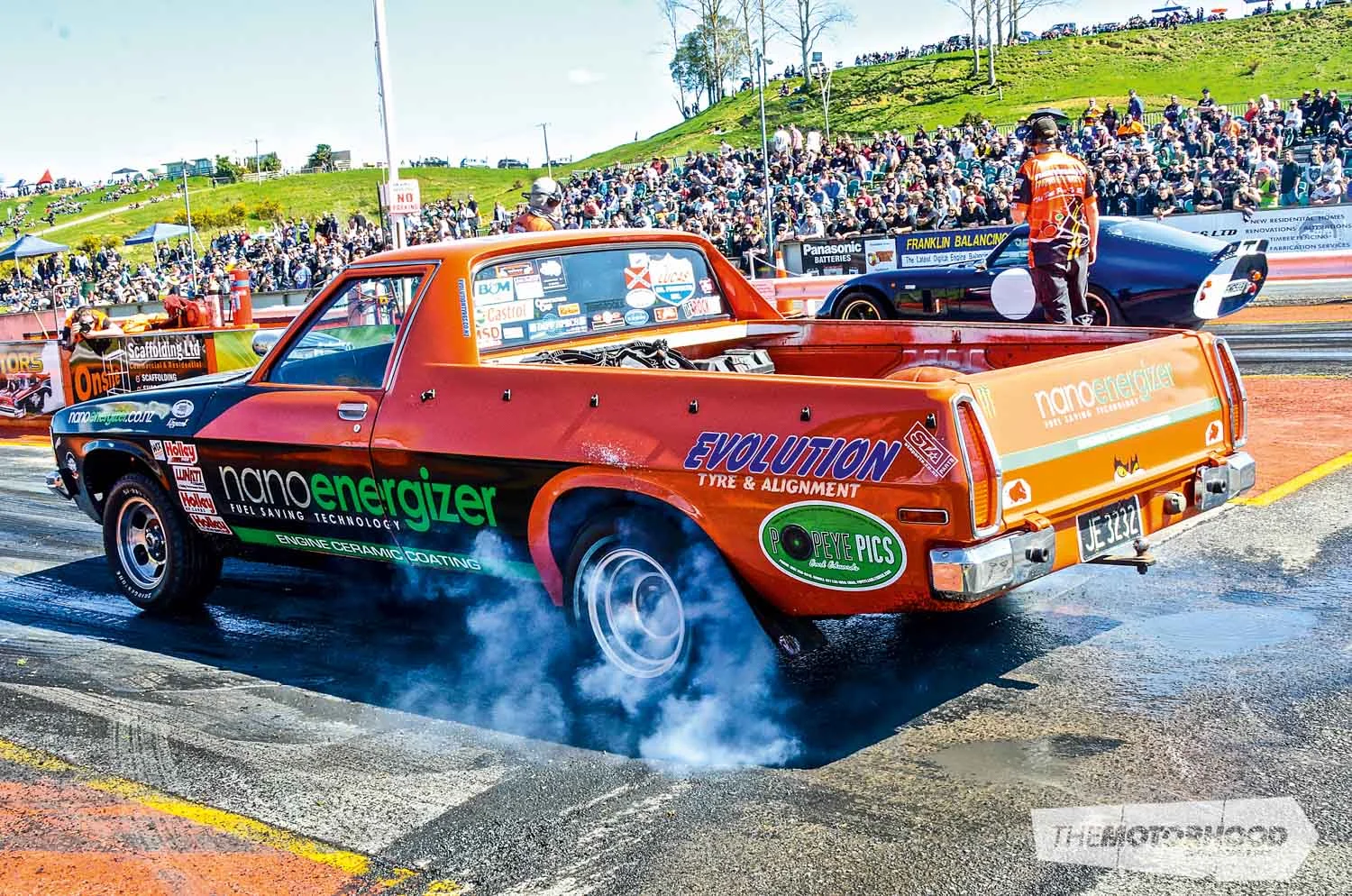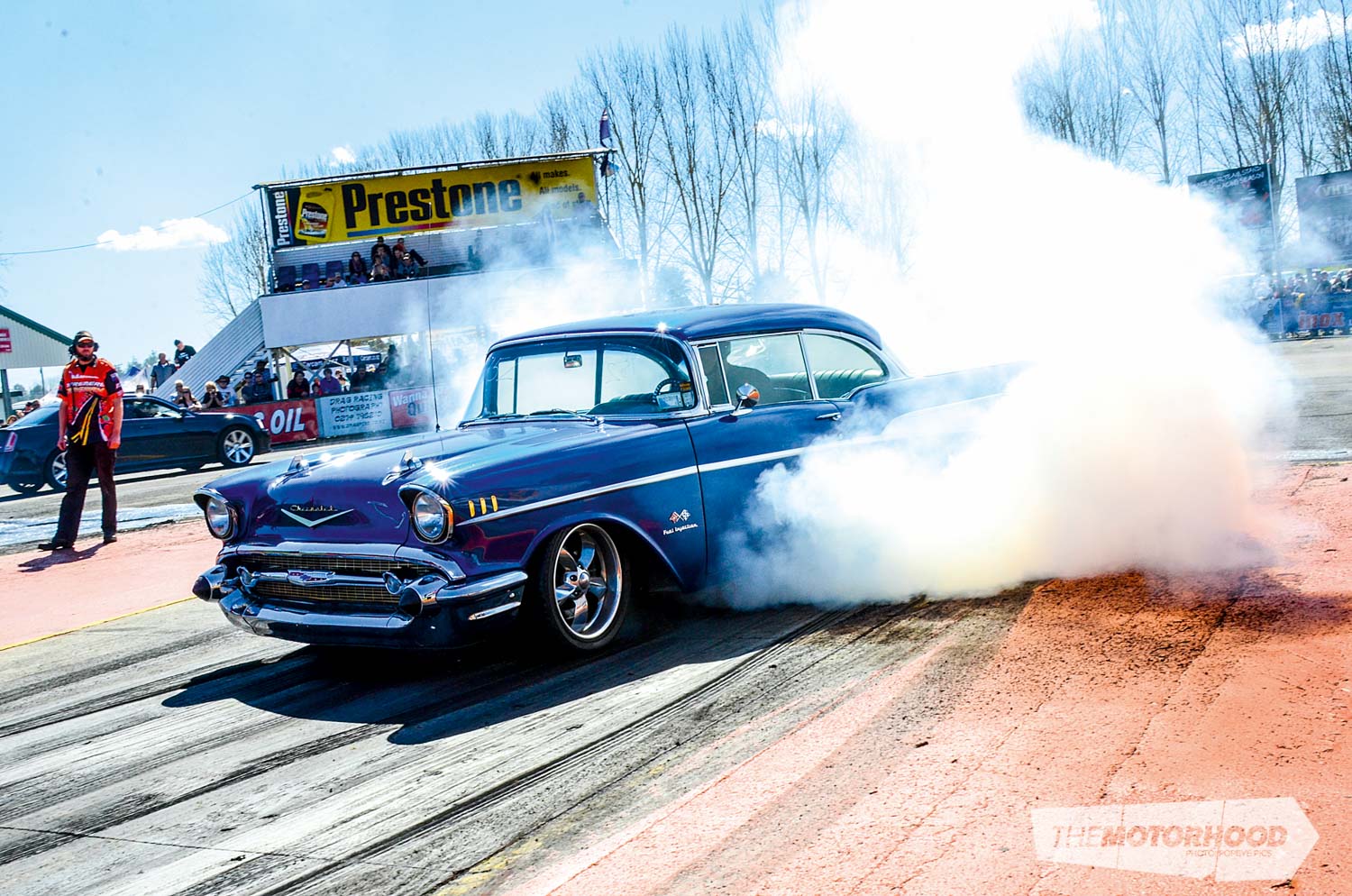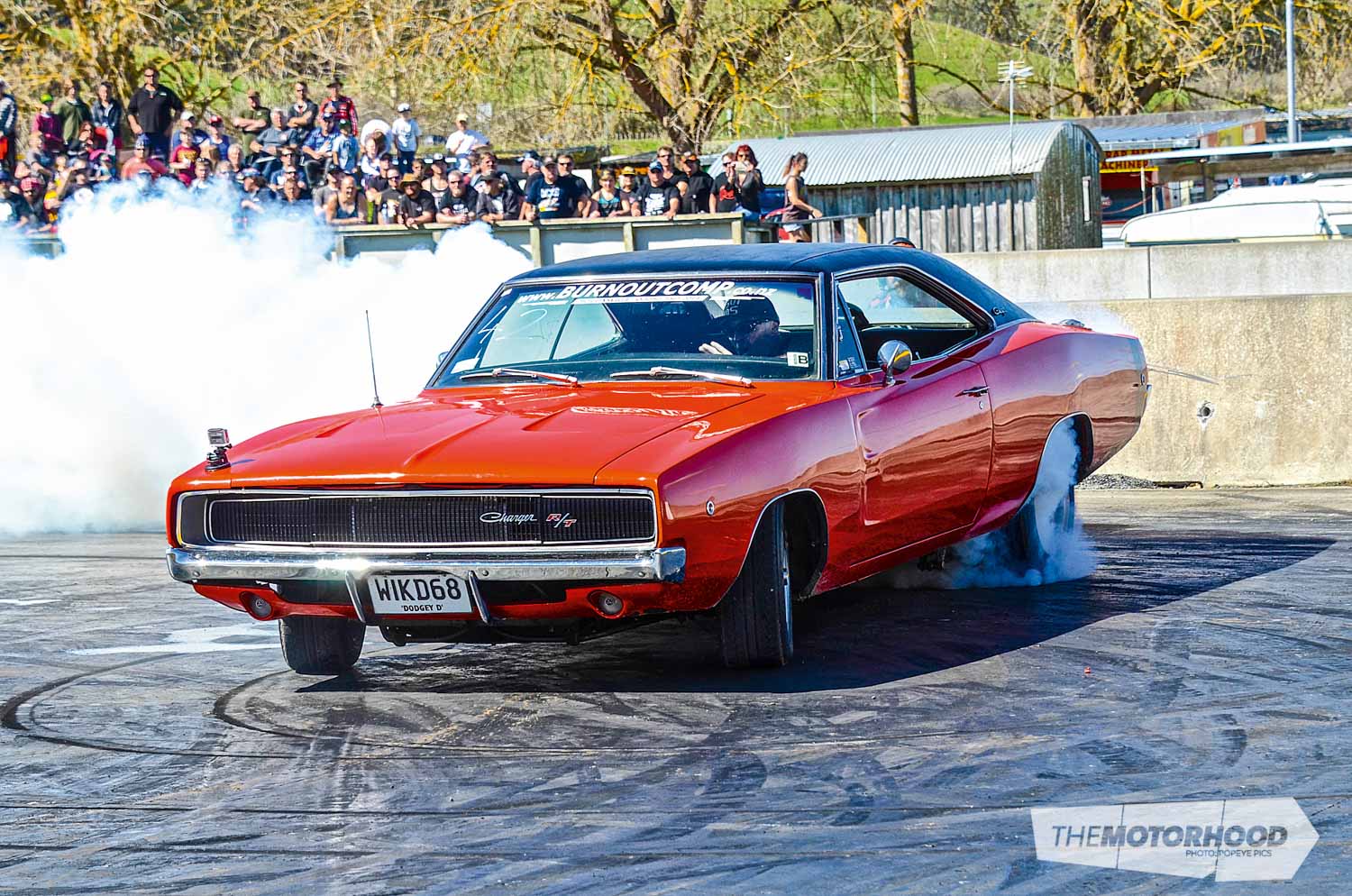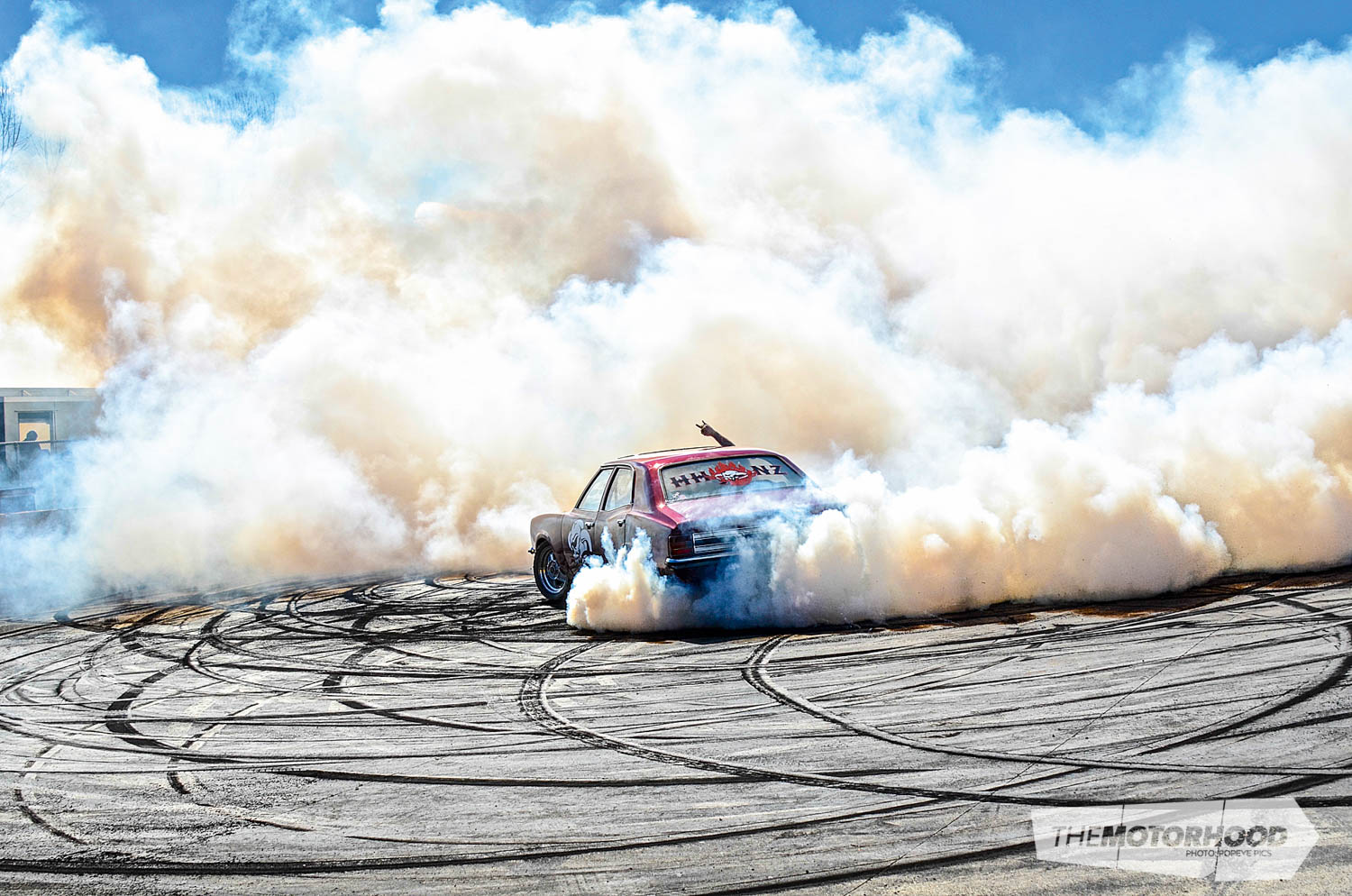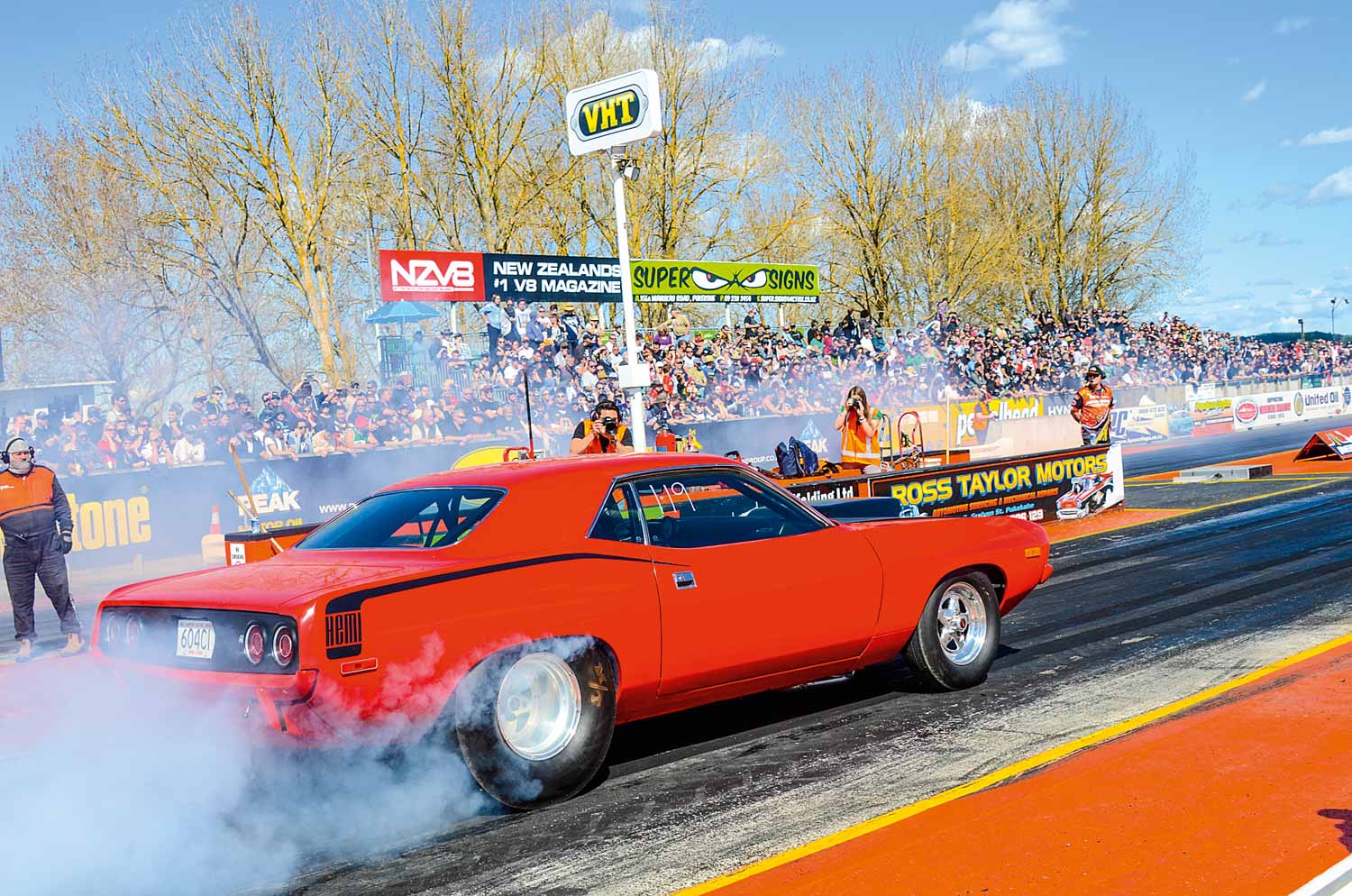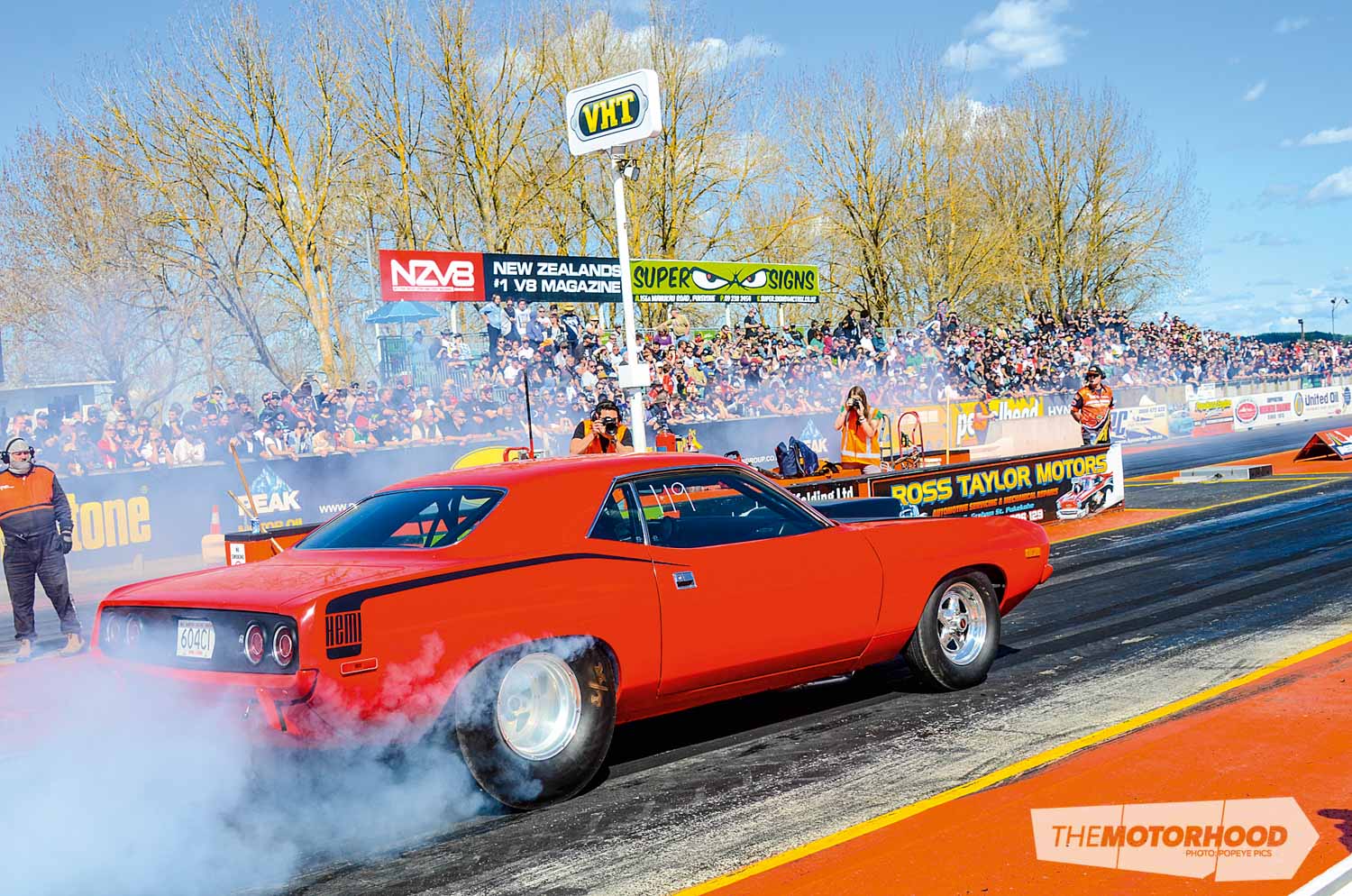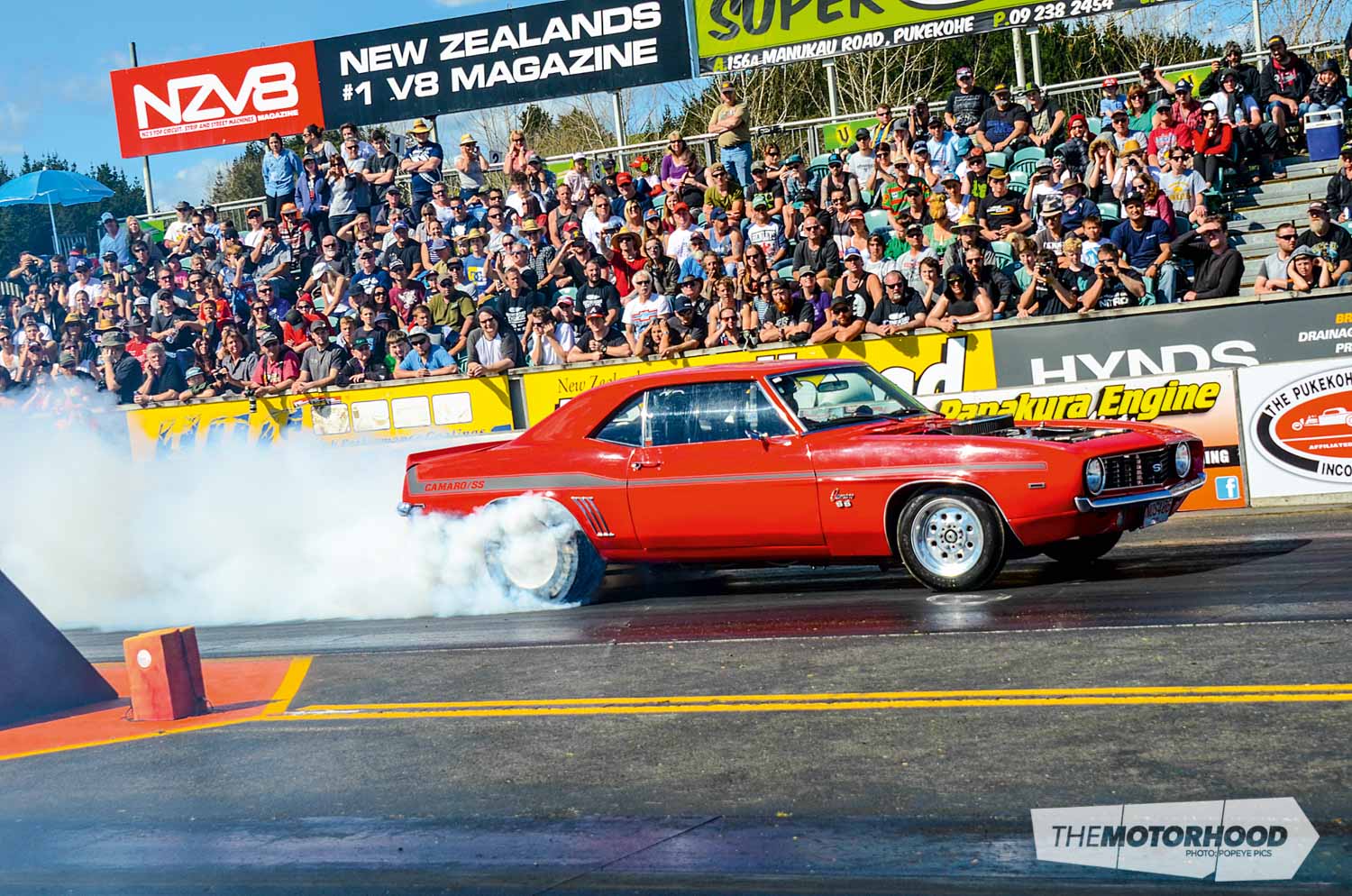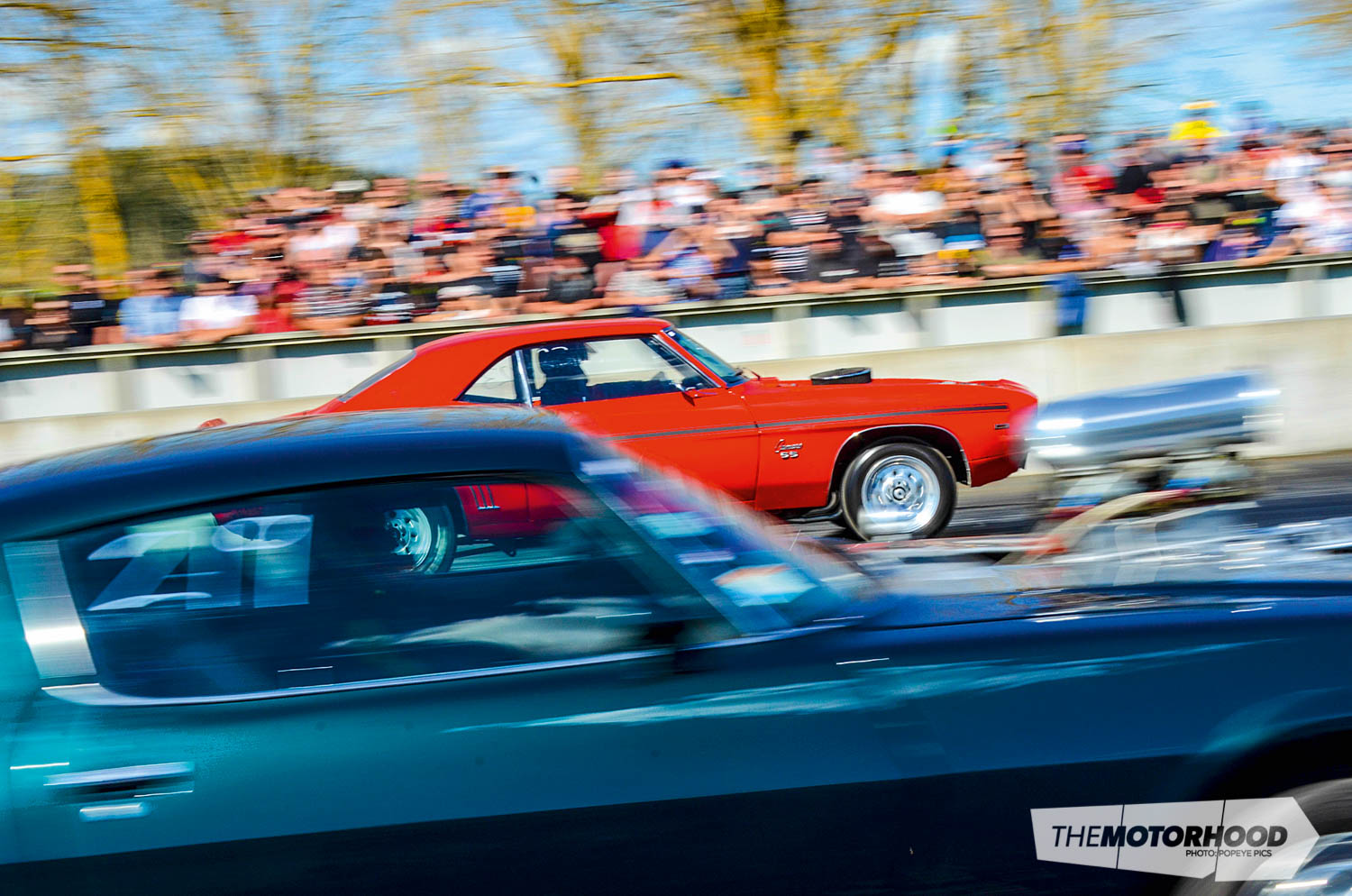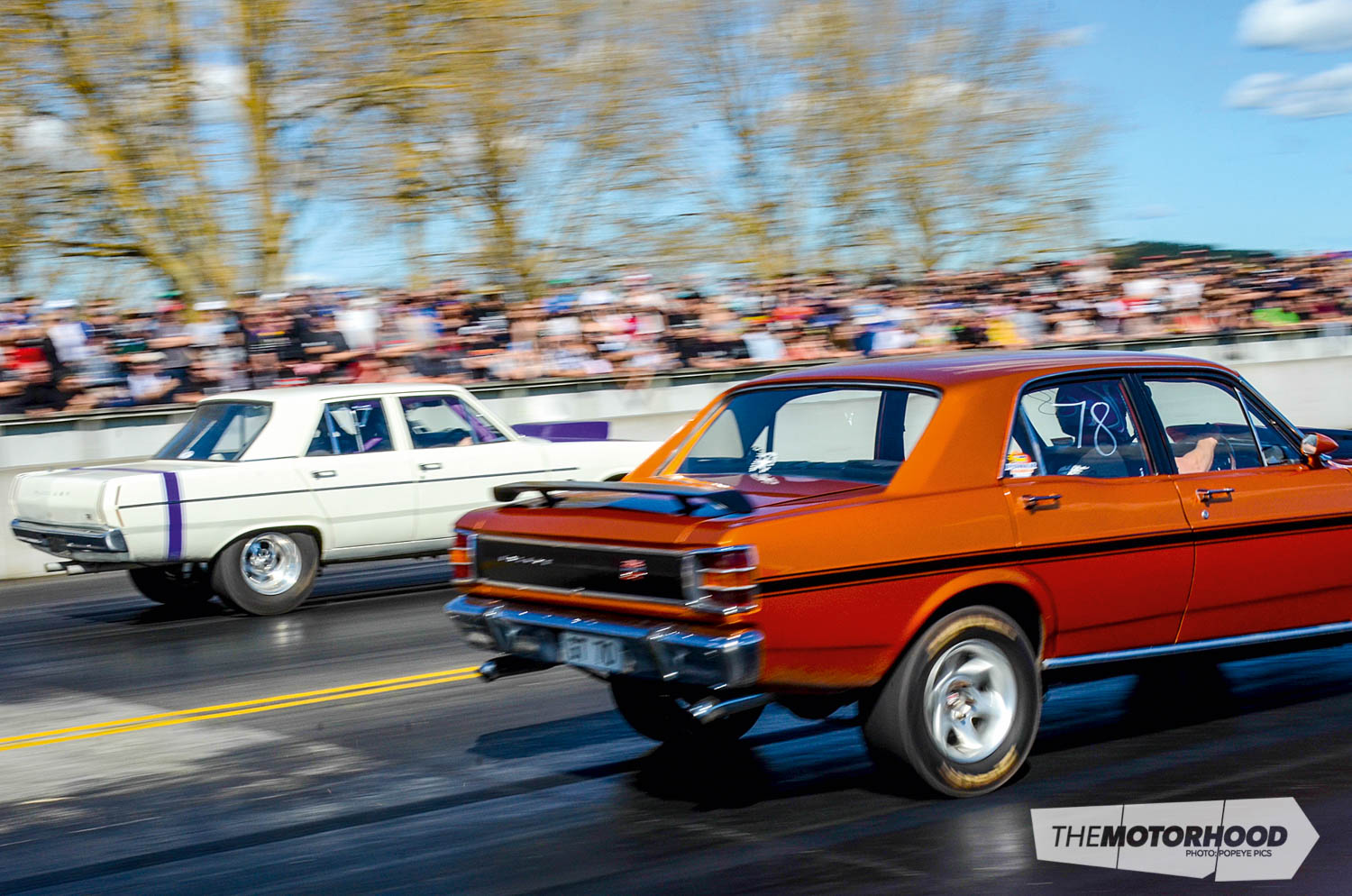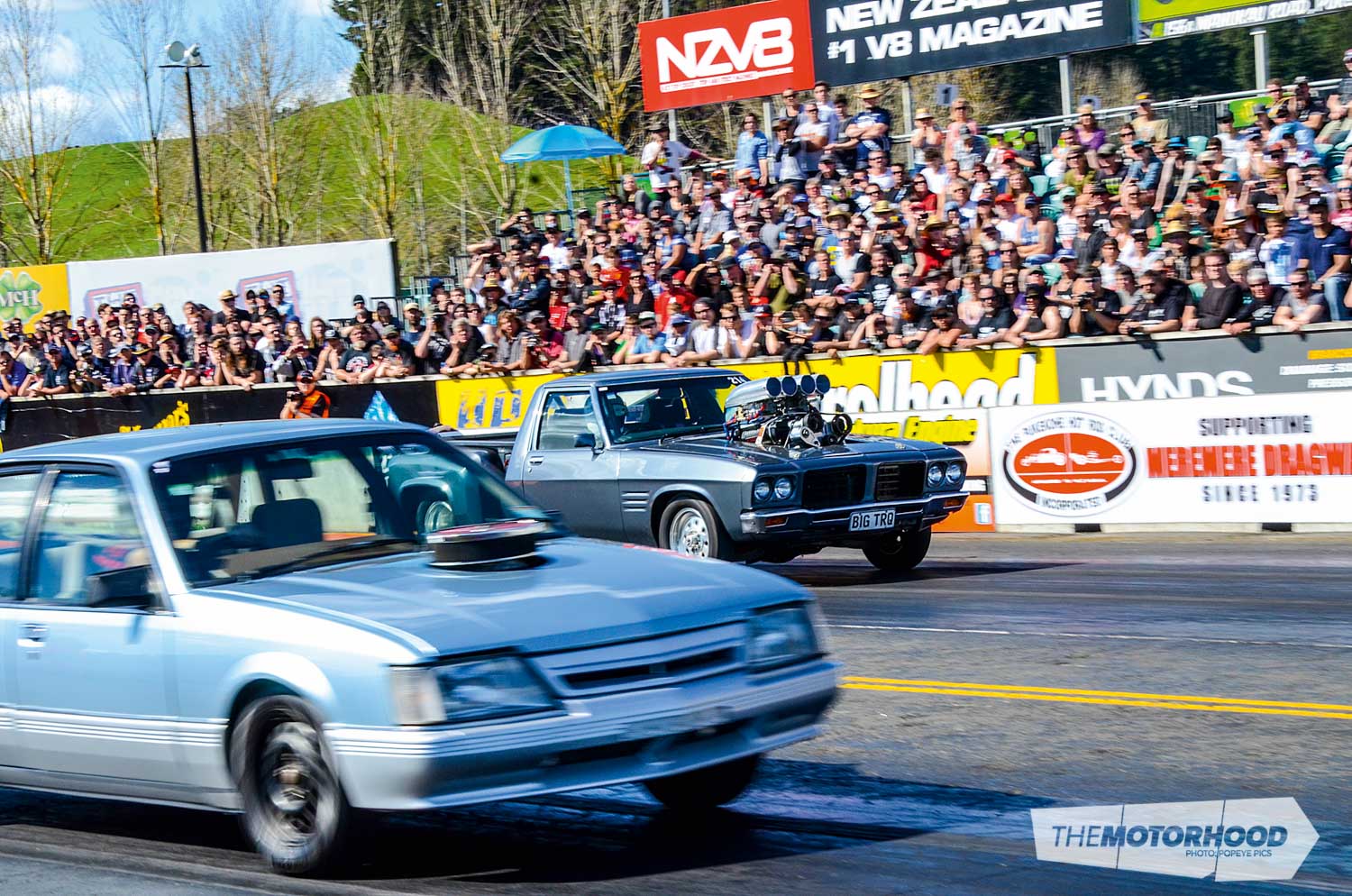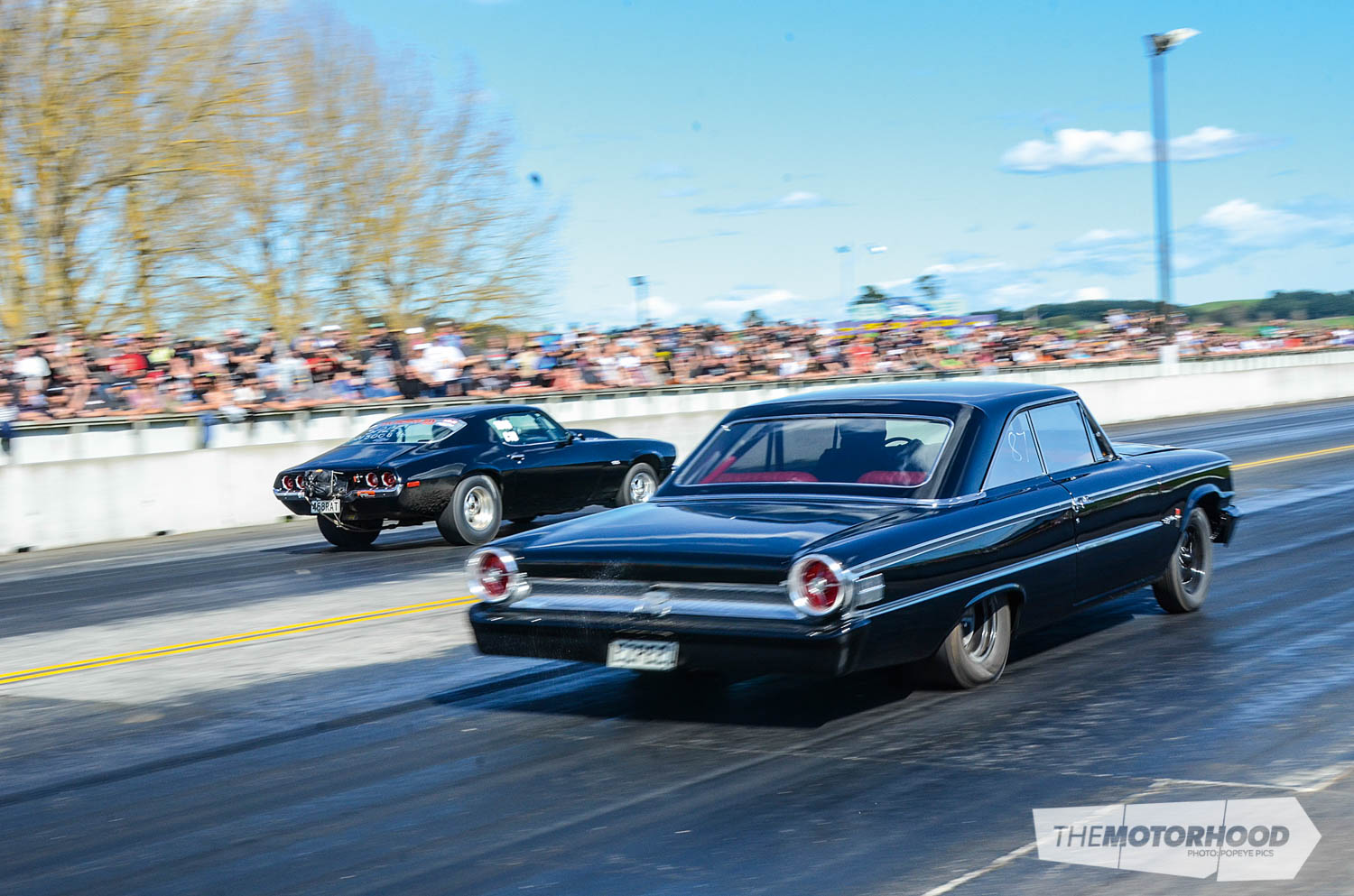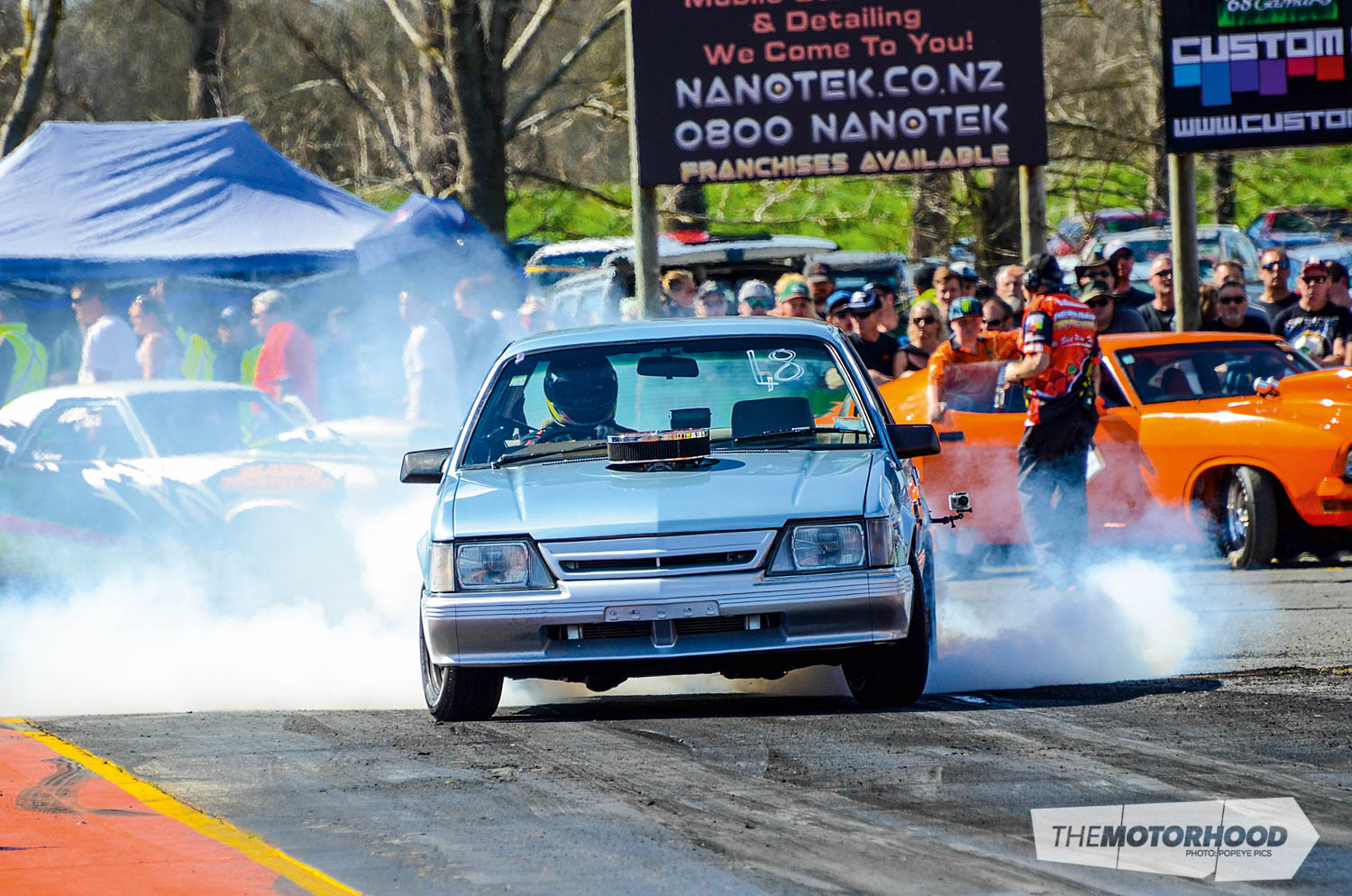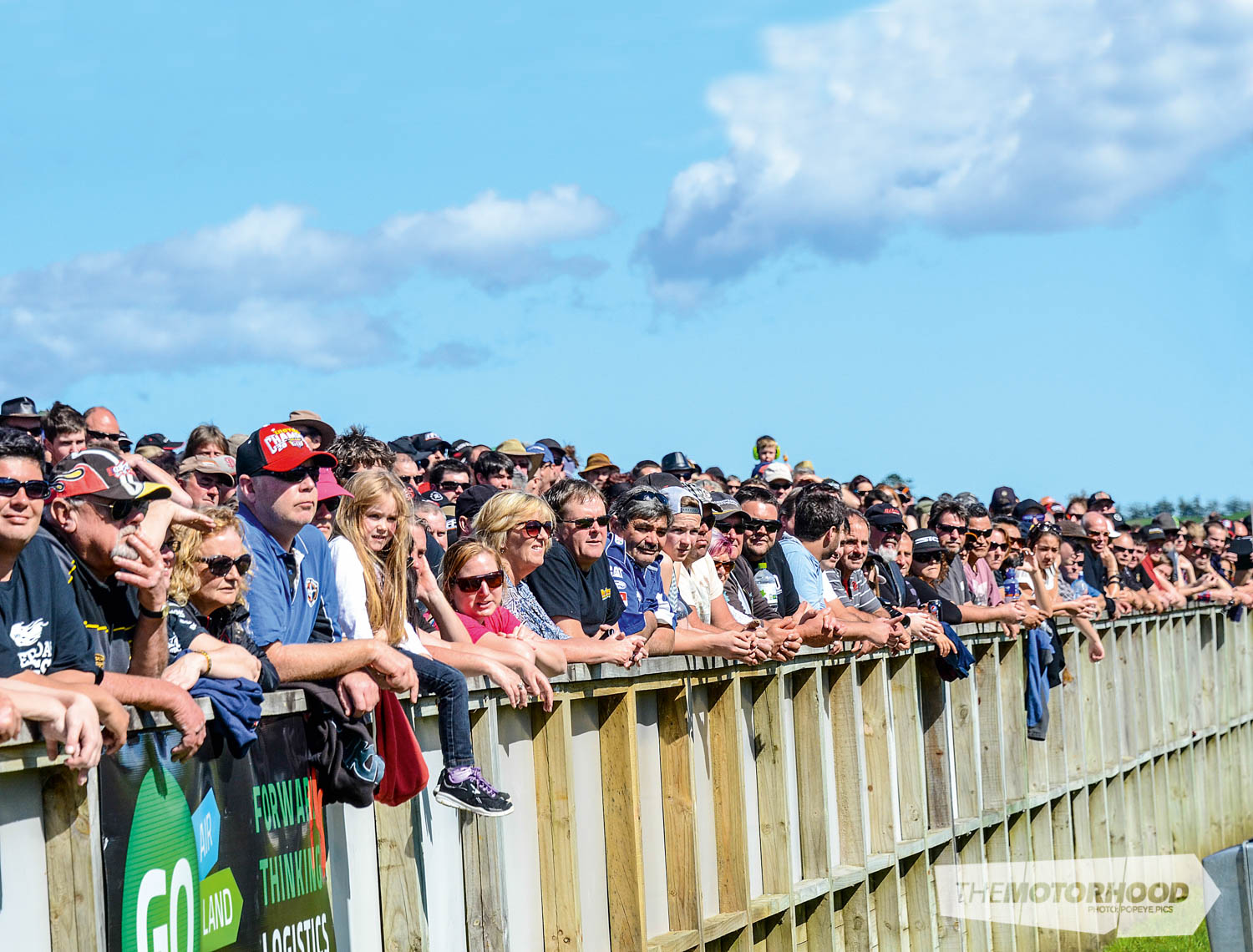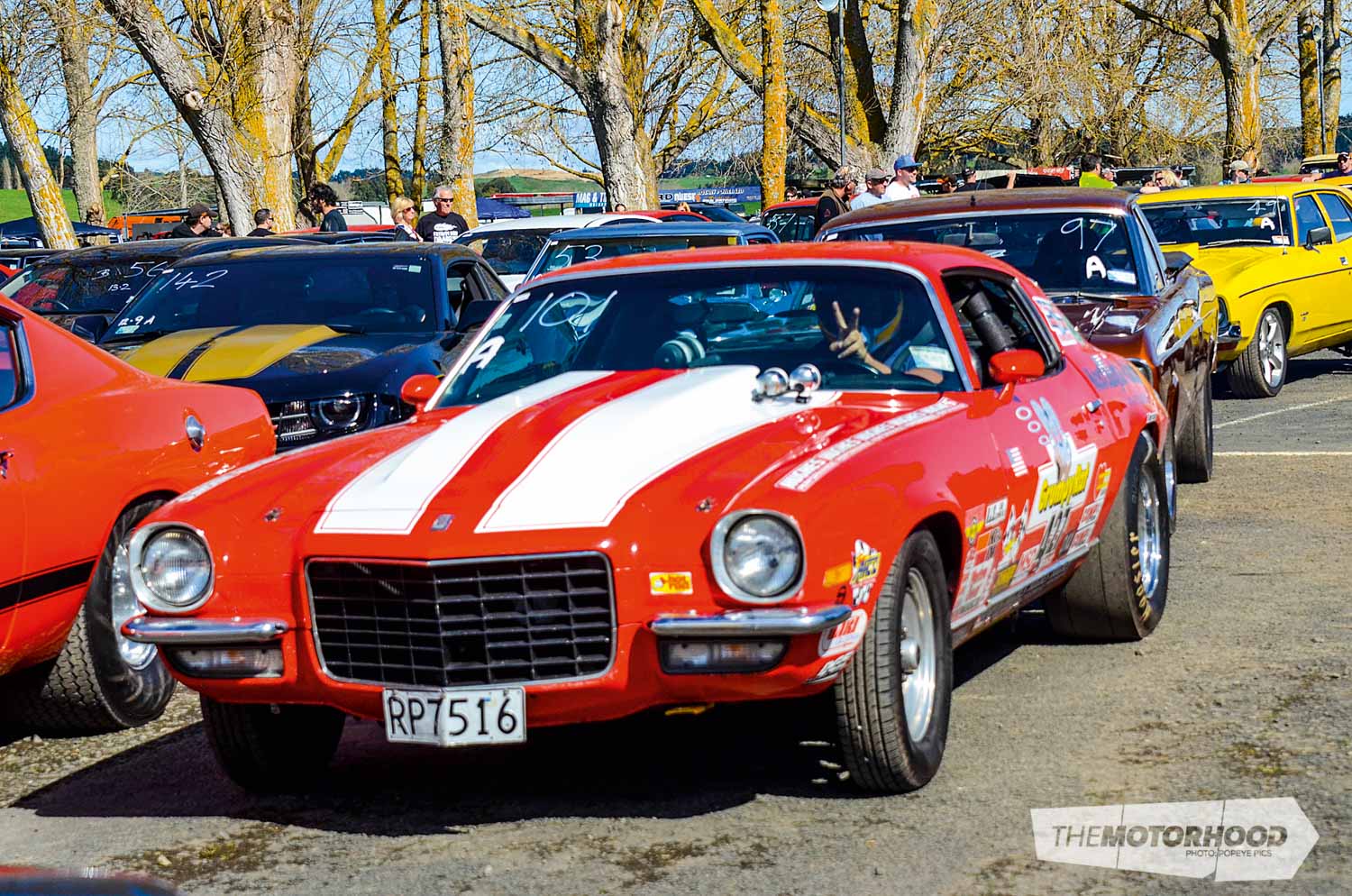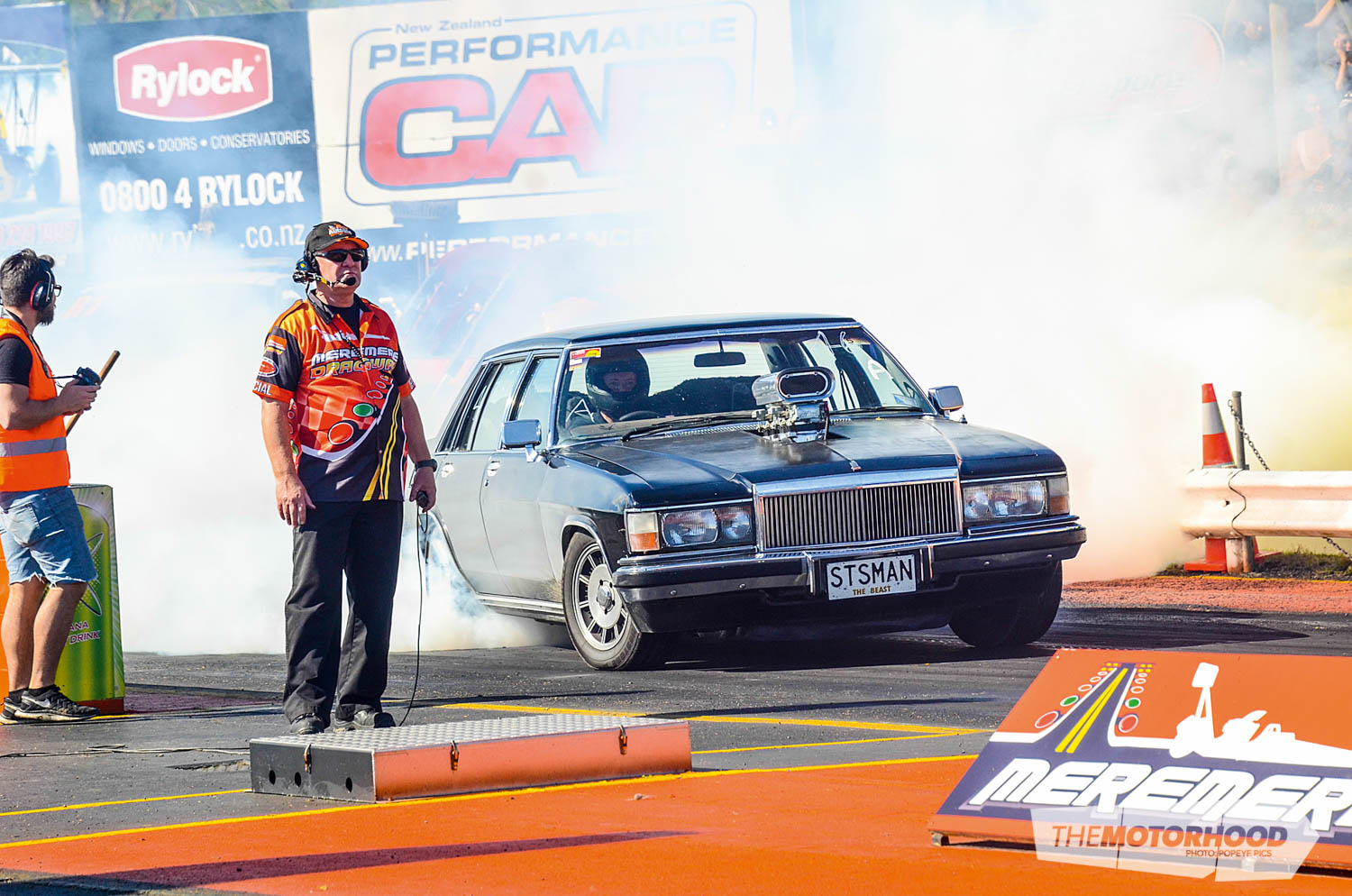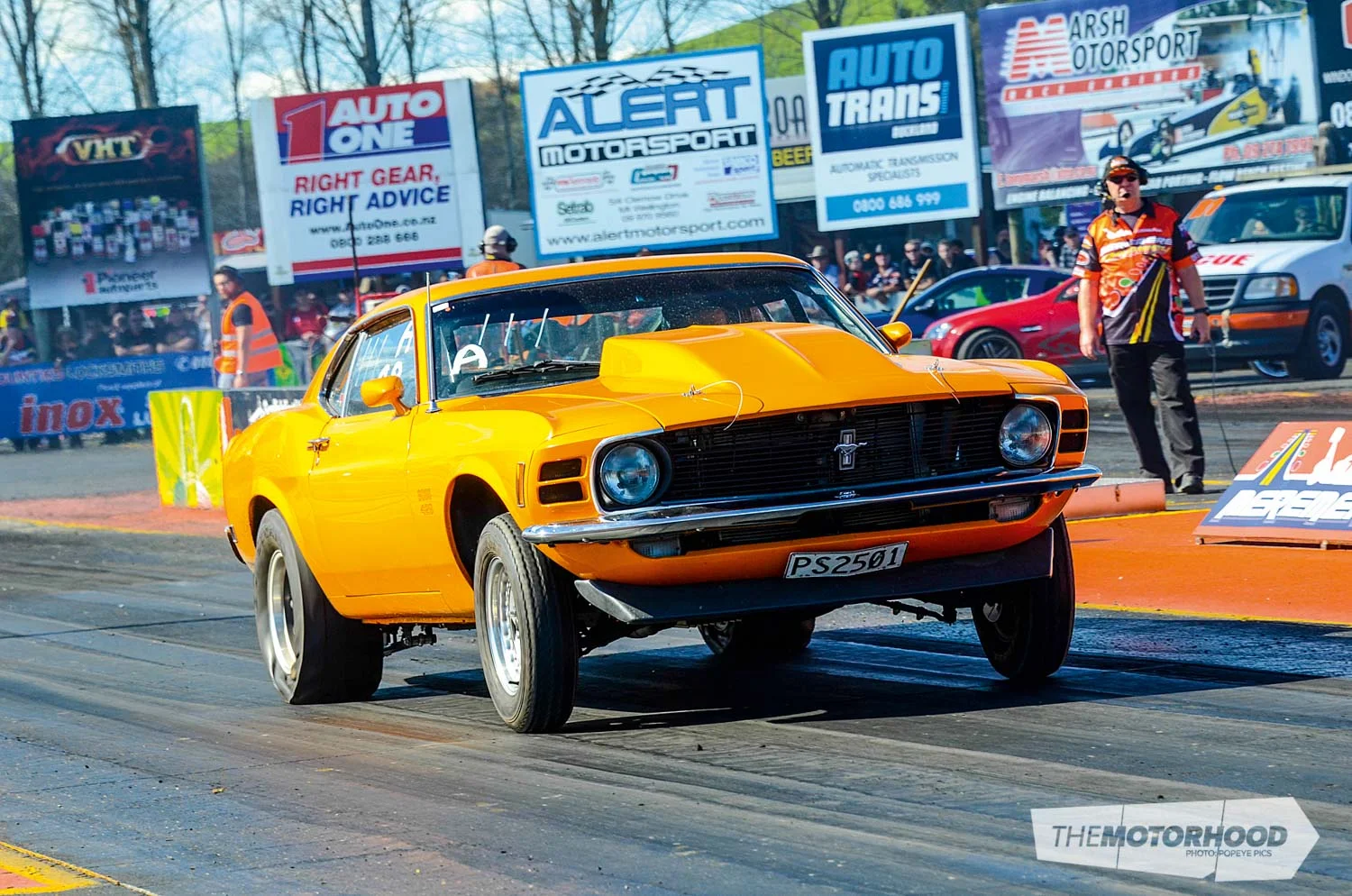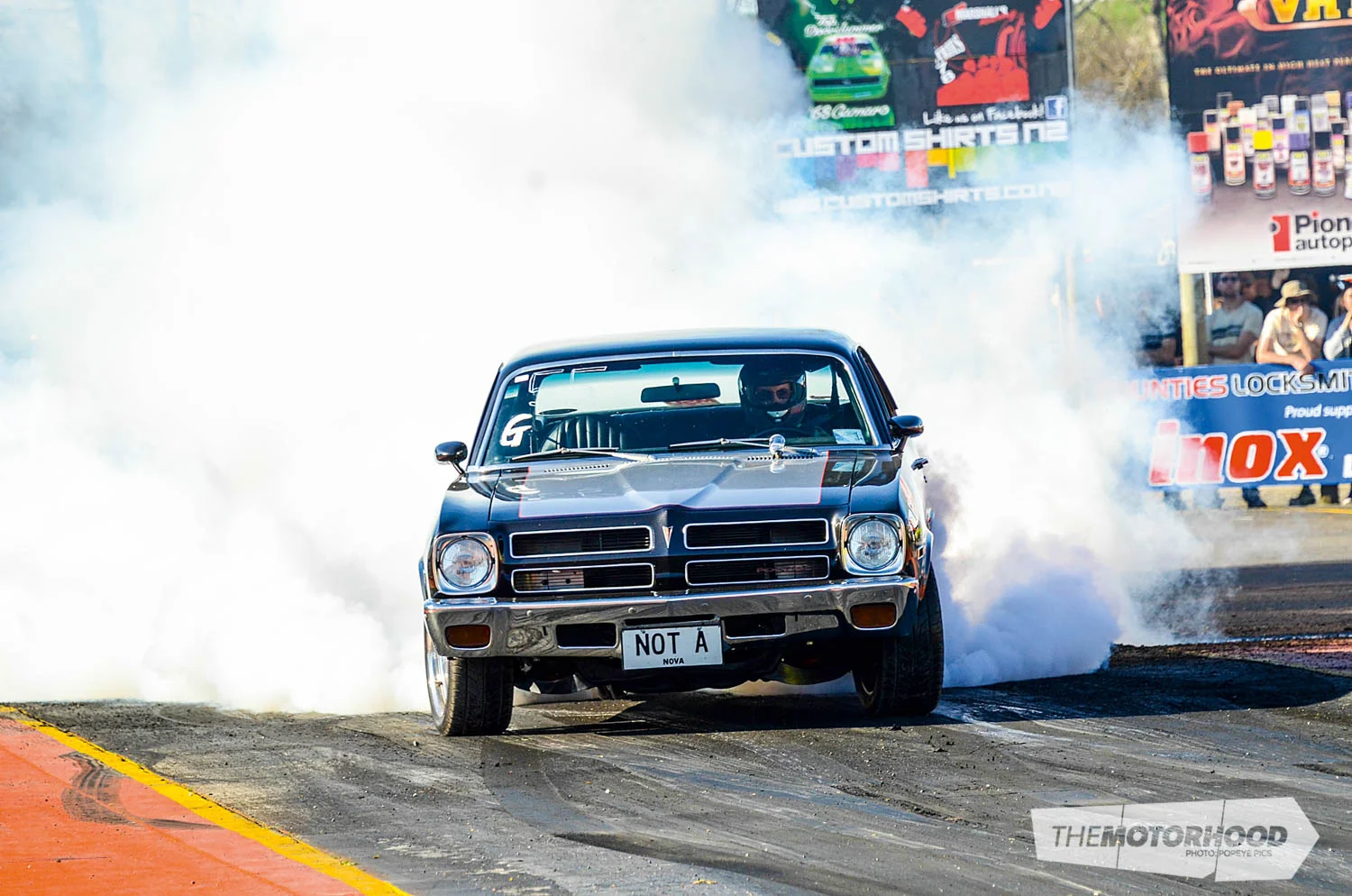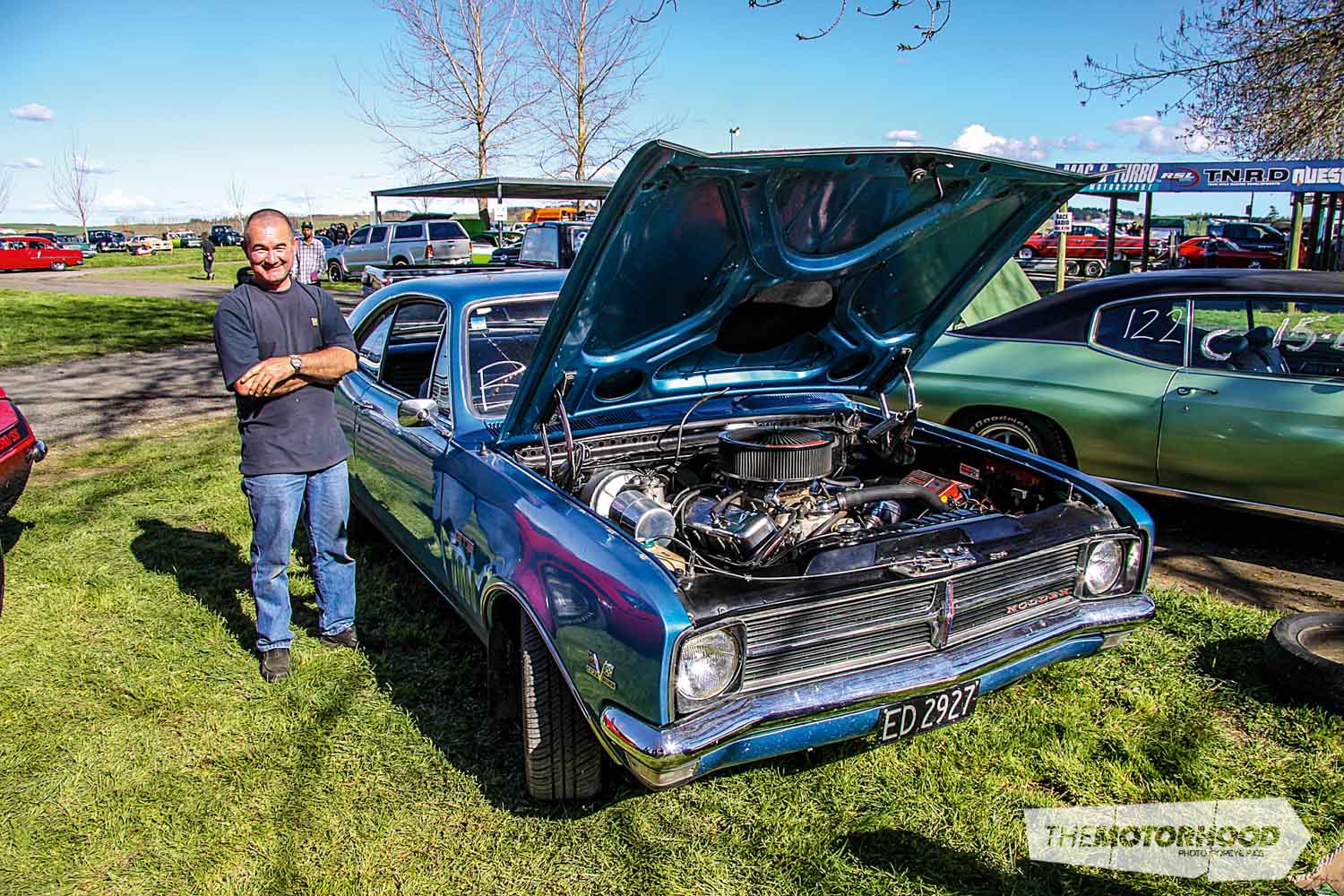data-animation-override>
“While we’re celebrating the silly season we thought we’d throw in a bit of a flashback to another time of celebration — the Father’s Day Drags”
Year after year, the American Muscle Car Club (AMCC) brings V8 lovers one of the biggest and best events on the drag-racing calendar, and the 2014 running of the New Zealand Petrolhead–sponsored Father’s Day Drags was no exception — this year, it was probably bigger and better than ever.
There were fears just a few days out that the rain date might be needed, as the weather had been less than favourable over previous weeks, with on-off rain that didn’t stop until the night before the meeting. But, come Father’s Day morning, the skies were clear, the track was sticky, and the crowds were huge!
Also huge was the number of entries, with around 180 V8s signed up, including some of the toughest street cars in the country, which had travelled from as far away as Canterbury to make it there.
The format and the rules for the day are simple, which is probably why this event is always so successful. If your car is factory V8 powered, comes from Australia or America, is registered and has a WOF, and can pass tech inspection, then you can race — you can’t get much simpler than that! Of course, given the reputation of the event and its aim to find New Zealand’s quickest and fastest street cars, you need to be pretty rapid, too, and this year plenty of cars were.
The race format is also straightforward. The entire field runs up to three qualifying passes to set their dial-in time for the dial-your-own (DYO) racing brackets. From these qualifying times, the quickest eight US and Aussie qualifiers are pulled out of the field to race in the Merlin Top 8 Shootout. These guys race heads-up to find the fastest Australian and American V8 street machines in the country. With 180 entries, many doubted that they would get through qualifying in time, but, thankfully, the day ran smoothly and to schedule. The qualifying times revealed how quick some of our street cars are getting, with the slowest car to qualify for the Top 8 Shootout running an 11.8 — pretty respectable for a street-driven car.
The quickest in qualifying was Reece Fish, who put down a few sorting passes on the new all-alloy block, twin-turbo 538ci engine in his 1956 Chev. Dyno tuning on E85 before the meeting revealed 1550hp at the tyres, so his running an 8.3s at 167mph for the top spot was not entirely unexpected. Sadly, after a couple of strong qualifying passes, Reece did not return for the Top 8 Shootout, which opened the door for the rest of the field to claim the number-one-spot bragging rights for the meeting.
The Aussie Top 8 Shootout was the first battle to get underway, the four pairs racing heads-up with no handicap starts, as you get in DYO: here, you just go hard out, and the first over the line gets the win. Some pairings were closer than others, and one racer won by a mere .038 seconds, with both cars going through the traps at 123mph — that’s close racing! Others were not so close, with Barry Plumpton — the quickest of the first round — running a 9.25 at 154mph, 2.3 seconds and 40mph faster than Joe Coombes in the other lane. Gary Bogaart had been sandbagging in his Falcon in round one, cutting a great light but cruising to a 10.1; however, in the semis, he faced Barry Plumpton’s HQ. It was time to get serious, and Gary fronted up with an impressive 8.79 at 141mph to beat Barry’s 9.04 at 159mph. In the other semi, Sanson’s Kathryn McDonald cut a near perfect light and ran 10.87 to defeat Anthony Clarke’s Commodore, which ran a respectable 12.09 at 112mph. In the final pairing, Kathryn seemed to wait an eternity for Gary to come to the line, but I think she knew he would have to red-light or break something for her to win, and he did neither, taking it easy off the line and staying a nose ahead to win by just under half a second — a good result for Gary, who now has one of the few eight-second street cars in the country.
The American Top 8 Shootout was just as tough, and, even with Reece Fish out, there were still some serious street cars waiting to do battle. Bruce Cox was first, with the easiest win of round one, and Mike Kitson also made it through with his immaculate and ridiculously fast two-ton 1963 Galaxie. Rob McBride pushed his 604ci (that’s 9.9-litre in today’s money)-powered Cuda to the only nine-second pass of the round, and Craig Wall went through with a mid 10 after Christchurch’s Daniel Southall ran out of nitrous as he launched, flat spotting and missing his way to an 11.11-second pass, well off the 9.7s he had been running earlier.
Round two saw what was probably the pairing of the meeting, Bruce Cox versus Mike Kitson. The big Galaxie ran hard with another scorching 10.2 5 at 135mph, but Bruce had cut a perfect light with the Camaro, leaving a full three tenths of a second quicker than Mike to win with a slower 10.37 at 140mph. In the other semi, Rob McBride ran another 9.76 to easily eliminate Craig Wall, who still pushed his Camaro to a very respectable 10.41 at 137mph. This set up a fantastic final with Bruce, who had run a 9.43 in qualifying up against Rob, who’d also been running nines like clockwork. After seven years of being the bridesmaid at this event, Bruce just had to run hard and not red-light for the race to be his. In the other lane, Rob had to cut a good light and get the perfect pass out of the Ray Barton Hemi to stand a chance. When the tree dropped, Rob left first, but not by enough, as Bruce pushed the Camaro through to another 9.45 at 147mph to beat Rob’s 9.67 at 139mph — a fantastic race to end the Top 8 Shootout!
Those who didn’t make the top eight were broken into three DYO brackets in which competition was fierce, and consistency was key, although a few racers were sandbagging a bit too, running just hard enough to win while hopefully not breaking out. The bracket grouped similar ETs together, so the racing was very competitive without the need for massive handicap starts, which can lead to frustration for chasing drivers and confusion for spectators when one car is mid track before the other leaves the start line.
In DYO A, the dial-ins varied from nines up to high 12s, which was where the serious cars — including some from the top eight — were competing, and it was a real battle, with over 40 entries in the bracket. The first round was interesting, as a few seasoned racers failed to come to grips with the track, red lighting or breaking out, and some were lucky to make it through after running a second or more off their dial-ins. The second round was different, with everyone pushing hard to stay in the competition; unfortunately, some too hard, as six of the 10 races were won — or lost, depending on your perspective — by breakouts, a trend that continued in round three, with Tauranga’s James Key the unluckiest when he red lighted by a mere one hundredth of a second. He would have lost anyway, as, in a double breakout race, he broke out by 0.04 compared with the winner’s 0.02 — some days you just can’t win no matter how hard you try!
The next couple of rounds were tight, with the final coming down to Tracy Segedin — who had been running consistent 12.3s on a 12.23 dial-in in her Monaro — up against Dion D’Anvers, running equally consistent 12.1s on a 12.00 dial-in. With the dial-ins so close, it was nearly a heads-up race, especially when Dion cut an almost perfect light to leave only a tenth of a second after Tracy, and that was enough to get him the win, 12.05 on his 12.00 compared with Tracey’s 12.24 on a 12.23 — very tight racing!
DYO B was home to those in the high 12- to 15-second range, and, with close to 50 entries, this was a tough bracket to race. In similar fashion to DYO A, no less than 17 of the first-round racers eliminated themselves, and, again, in the third round, almost half the field fell on their own swords. Thankfully, the drivers
who made it through put on a real battle. Those remaining deserved to be there, running within a few hundredths of their dial-ins and with similar reaction times, too. The last three rounds saw some very close racing, with the final again being an Aussie-versus-US battle. David Cracknell in his ’68 Plymouth Satellite had been running consistently just on his 13.55 dial-in and was paired against Grant Smallfield in his 2003 SS Commodore, who dialled in one second slower at 14.55. David should have lost it on the tree, as his reactions dropped from near perfect in the previous few rounds to an ordinary 0.3 seconds as he started chasing down Grant, who left with a slightly sharper reaction time. Not realizing he had won it on the tree, Grant pushed it just a little too hard and broke out by a mere two thousandths of a second to hand David the win.
DYO C was more of the same, with close to half of the 15-second-and-over entries eliminated through red lights, breakouts, or both during the first three rounds of racing, but that’s not to say the racing itself was bad. There were plenty of close pairings, with some real down-to-the-wire finishes in which I’m sure even the racers didn’t know who had won until they got their time slips.
By round four, there were only six racers remaining, with two finalists who’d both had a bit of luck on their side to make it there. Graeme Davies and his VR Commodore got the bye in round four, and then his opponent broke out in the semis to give Graeme an easy run into the final. There, he met Neil Darrah in his El Camino, who had been consistent through the rounds, running 16.3s on a 16.30 dial-in. In the semis, Neil red lit by two thousandths of a second, but, thankfully, he was on a bye run, trying to push the El Camino on the tree, to manage another 16.38 on a reduced 16.20 dial-in.
For the final, it was Neil on a 16.20 against Graeme’s 14.76, and Neil again pushed it hard with a 16.24 on the 16.2, but lighting the red at the start meant he handed Graeme the win as he cruised through with a lazy 15.24 at only 77mph.
While, for many, the day is undoubtedly all about the racing, the event has become more than that. The Father’s Day drag meeting has become an institution for a lot of us, and marks the unofficial opening meeting of the new racing season. It is also a great opportunity to see a lot of classic American and Australian cars not just racing but also in the pits and car parks, where a fantastic collection of hot rods, classics, and muscle cars can be found, some of which are hardly ever seen anywhere else, such is the pull of this event — the racers know it, and the paying public do, too, with cars queuing from the highway to the track to get in. The only downside of the huge crowds is the 30 minutes or so it takes to get out at the end of the day, but, after a great day of racing this is no great hardship. The organizational and promotional skills of the AMCC, partnered with the hard-working team of volunteers at the drag strip, make a winning combination. They put on another magnificent event this year, and we look forward to seeing them do it all again in 2015.






